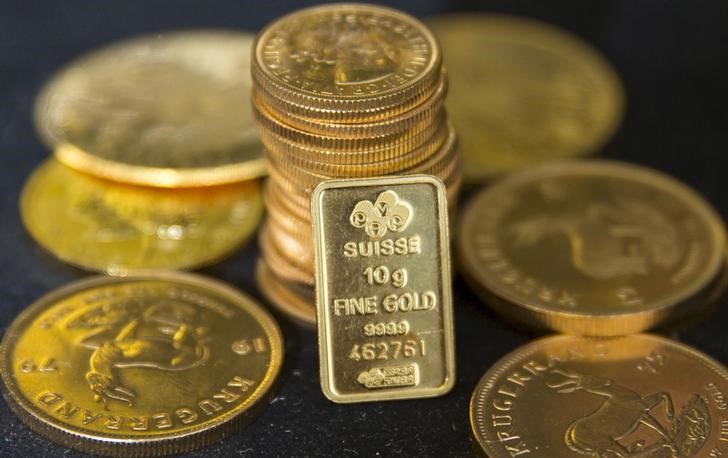Investing.com - Gold prices rose Friday after the release of the monthly U.S. labor market report, but gave up some of their gains as markets realized that the jobs market was actually stronger than first seemed.
The U.S. economy created only 20,000 new nonfarm jobs in February, well below expectations, but wage growth picked up and the jobless rate declined to its low for the current cycle, both of which point to less slack in the economy and the possible need for further interest rate increases later this year by the Federal Reserve. Rate hikes are generally bad for gold because they make it less attractive than interest-bearing haven assets such as government bonds.
The Comex gold futures contract rose above $1,300 a troy ounce for the first time since the start of the month on the back of the report, but later gave up some of its gains to trade at $1,297.75 an ounce, up 0.9% on the day.
As such, the yellow metal is set to finish the week more or less where it started it.
The news that job creation nearly came to a weather-induced standstill in February also gave only a brief fillip to other haven assets. The 10-year U.S. Treasury yield was trading at 2.64%, unchanged from before the report. Gold has lagged Treasuries this week, as 10-year yields have fallen from 2.76% at the start of business on Monday.
Haven assets are finding it easier to get bids after comments earlier in the day by the U.S. ambassador to China downplaying the chance of a trade deal between the two countries. That raised fears that the trade war could get worse rather than better in the near term. The mood in European and Asian markets had already been spoiled by the European Central bank's decision to cut its growth forecasts on Thursday and by a sharp drop in Chinese imports and exports in February (made worse by calendar effects).
In other metals trading, palladium futures fell 0.8% to $1,470.10 an ounce, while copper traded down 0.8% to $2.89 a pound, its lowest since mid-February.
